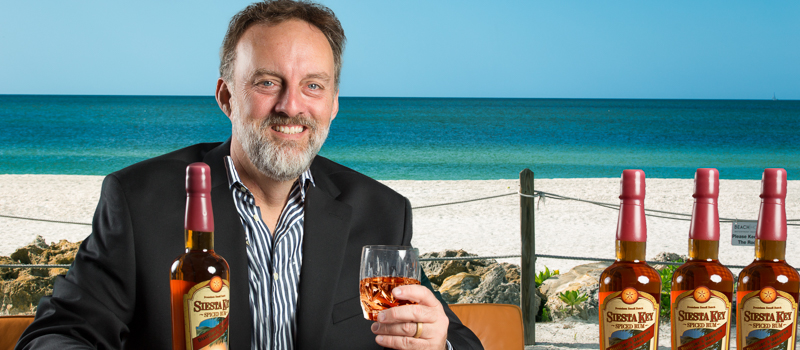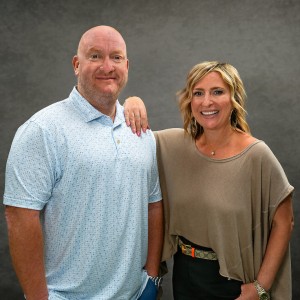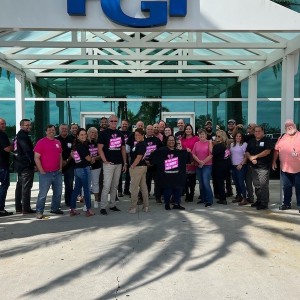Contrary to the growing mythology around Siesta Key Rum, Sarasota businessman Troy Robertsdidn’t start distilling rum as a hobby. “It costs $4,000 for the license alone,” Roberts notes. “And that’s only a fraction of the total cost, unless you are distilling illegally in the garage.” It confounds him that anyone believes he would take on that burden just for fun. But he will cop to the fact that despite having run successful businesses before, he had no idea what he was getting into when he founded Drum Circle Distilling in 2007. He didn’t know how to infuse spiced rum, much less to do how to do it economically. But he also didn’t know just how much demand there would be for his product. He didn’t know that in a few short years, he would be running a company out of a Sarasota industrial park that would be considered the best rum distillery in the United States. He didn’t know in a few short years he would be producing more than 100,000 bottles of rum every year.
“I had no idea how much I didn’t know,” he says. Today, a bottle of rum conceived at a moment when pirate movies owned the box office and craft brewing was entering a new renaissance has made Roberts one of the most sought-after distillers this side of the Gulf Stream. Before selling booze, Roberts found success brokering another sort of jolly excess. After a stint in the corporate world as director of product management for Compuware, he became a tech entrepreneur and created several websites for sports car enthusiasts. Those sites were all eventually sold in 2007 to a web company in Los Angeles, leaving Roberts the means to live in Sarasota and reconnect with his beach bum roots.

PHOTO BY WYATT KOSTYGAN.
That’s when he decided to file the papers and incorporate Drum Circle Distilling. He spent 2008 figuring out how to actually make rum, buying stills and setting them up to produce the sweet alcohol. It wasn’t until 2009 that he got a flavor that he found satisfying, and not until 2010 that a single bottle of Siesta Key Rum appeared on shelves. Even from that point, Roberts kept tweaking his formula. “The first five batches that we made got continually better,” he recalls.
Then things went crazy. Finally confident he had a good rum coming from the barrel, the company took its Siesta Key Silver Rum to the Miami Rum Renaissance Festival, the great grog proving ground for the nation. The drink won the Best In Class honor for white rums (the Siesta Key Gold and Siesta Key Spice rums also won awards that year).
“I didn’t expect to win this level of award this early on,” Roberts says. The win was both surprising and encouraging, and the company has returned to the competition three times since then. In 2015, the distiller brought three types of spiced rum and swept the category. “It’s getting to the point where we might have to change the name of this category to Siesta Key Rum of the Year,” wrote the Caribbean Journal. “Probably the tastiest rum in the world,” raved the Miami New Times.
The secret to Roberts’ recipes, he says, isn’t complicated. While most distillers in the United States use liquid ingredients to flavor alcohol, Drum Circle Distilling uses the good stuff. For a spiced rum, actual spices are put in the alcohol to infuse it with flavor directly, and then all of the solids are carefully strained out. It’s absolutely more work and more cost, but the reward is true flavor, something missing from even many rums advertised as made with 100-percent natural ingredients.
At this point, the Siesta Key Spiced is considered the best in the nation, and Drum Circle Distilling the most important rum maker outside the Caribbean. And Roberts wants to capitalize on that buzz.
This year, Roberts for the first time hired on a full-time distiller besides himself. Kevin Kawa, a Nebraska native, comes to the company with a degree in Brewing and Distilling he earned from Heriot-Watt University in Scotland. “He learned how to do real production rum,” Roberts says. And he has continued to expand his machine capacity as demand has grown. The first year the distillery started selling, it could only produce about 65,000 bottles a year, but, with the addition of new tanks, that grew to where the company in 2015 produced some 85,000 bottles of rum. This year, Roberts plans to add more capacity, and expects in 2016 to produce more than 100,000 bottles of rum.
But not all of those will hit shelves this year. The next big step for the company, Roberts says, will be entering the aged rum game. With a custom still shipped from Idaho and a new, internationally-trained staffer distilling, Roberts is confident this new product will stand up with the best, but only when it’s ready to come out of the tank. “We’re making something really cool,” he says, “but nobody will taste it for years.”










